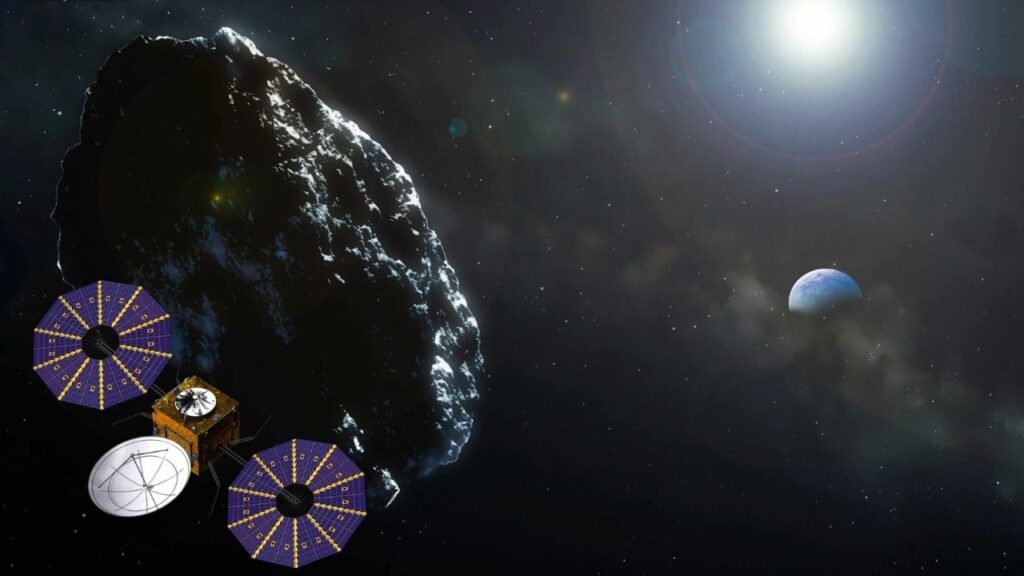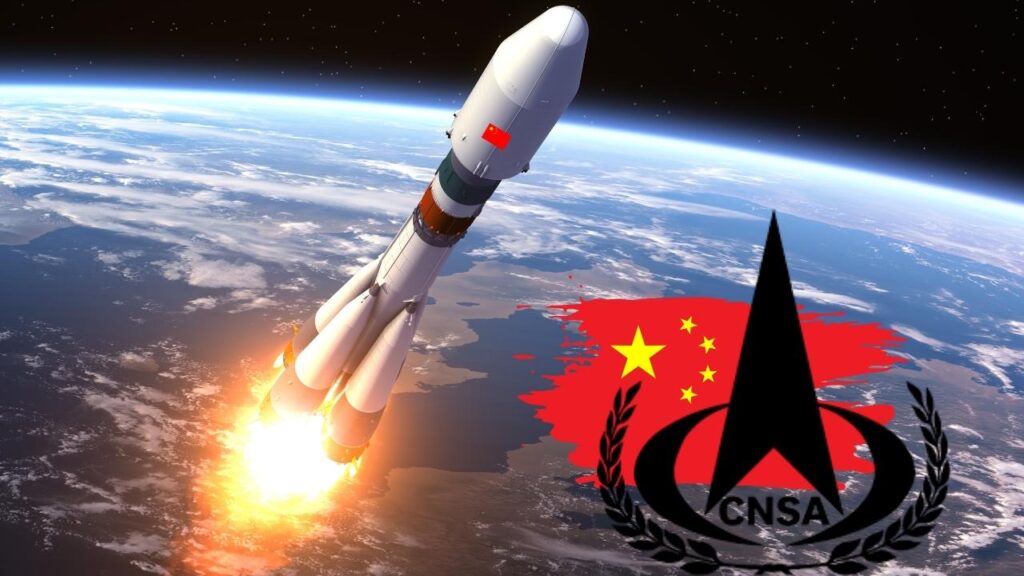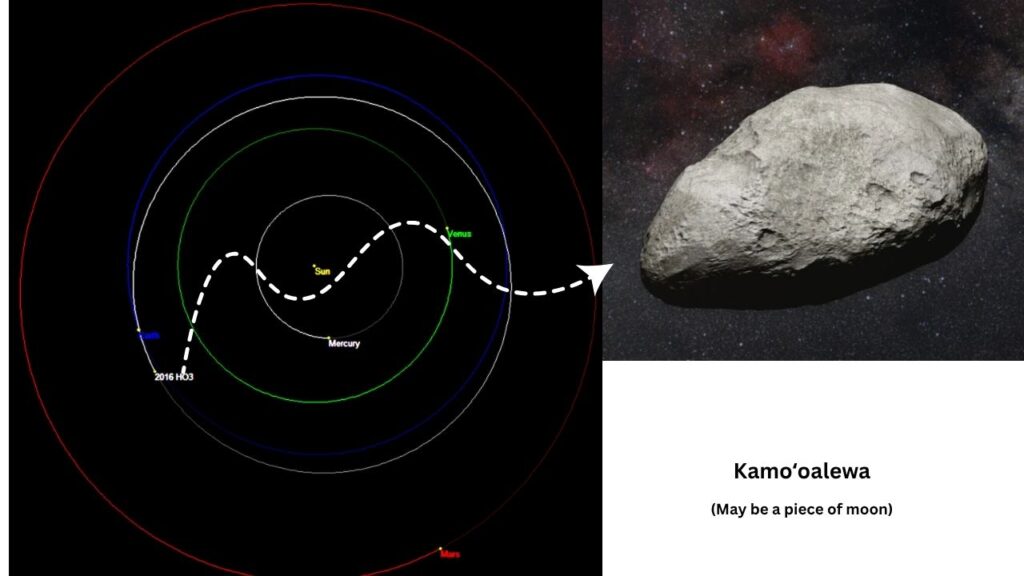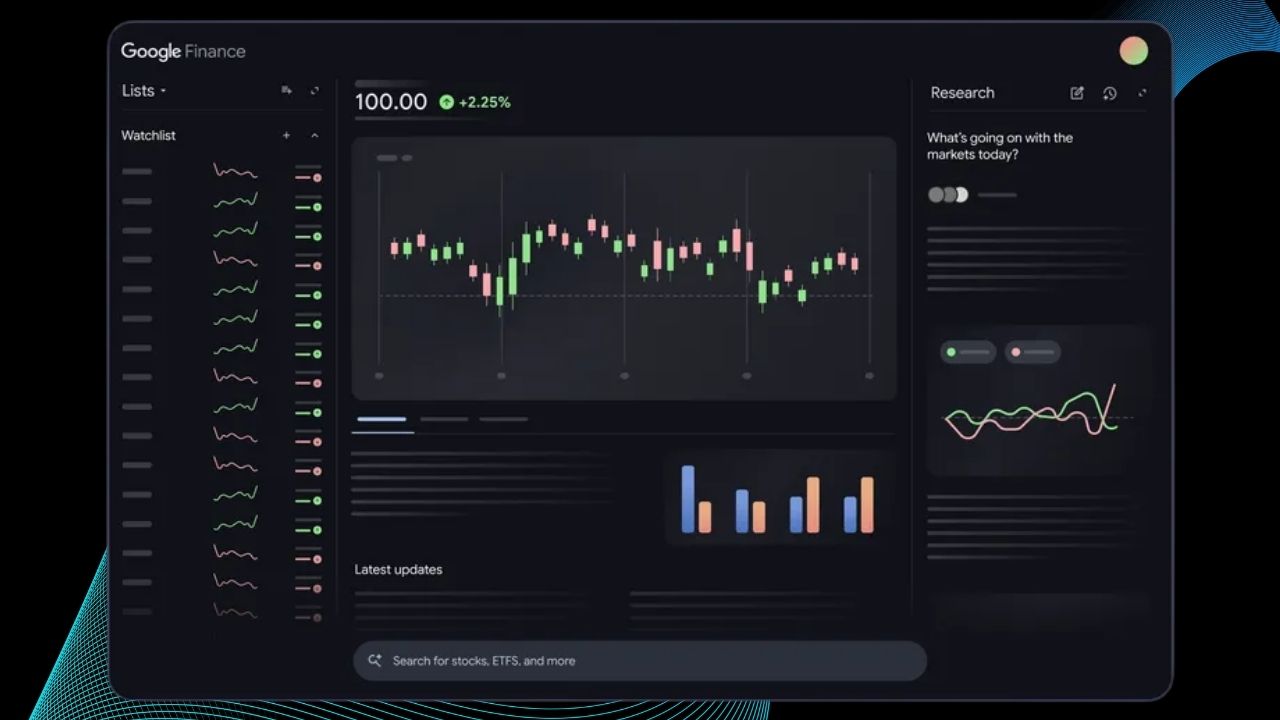China’s Tianwen-2 Returns Earth: China’s Tianwen-2 mission continues to make remarkable progress in its quest to explore near-Earth space and beyond. Recently, the spacecraft sent back impressive images of Earth and the moon from deep space, marking a significant milestone in the mission’s early phase. Meanwhile, on Earth, Chinese scientists and engineers are simulating lunar lava cave exploration, preparing for future missions that could unlock the moon’s hidden secrets.

This article offers a comprehensive overview of the Tianwen-2 mission, explaining its objectives, recent achievements, and the broader context of China’s growing role in space exploration. Whether you’re new to space science or a professional researcher, you’ll find clear explanations, practical insights, and expert analysis to deepen your understanding.
China’s Tianwen-2 Returns Earth
| Feature/Fact | Details |
|---|---|
| Mission Name | Tianwen-2 (天问二号) |
| Launched by | China National Space Administration (CNSA) |
| Launch Date | May 30, 2025 |
| Launch Vehicle | Long March 3B rocket |
| Primary Target | Near-Earth asteroid 469219 Kamoʻoalewa (2016 HO3) |
| Secondary Target | Main-belt comet 311P/PANSTARRS |
| Sample Return Expected | 2027 |
| Mission Duration | Estimated 10 years |
| Key Milestone | First Chinese mission to collect and return asteroid samples |
| Recent Achievement | Returned images of Earth and moon from 590,000 km away |
| Ground Simulations | Land teams simulating lunar lava cave exploration with autonomous robots |
| Official Resource | China National Space Administration (CNSA) |
The Tianwen-2 mission represents a major milestone in China’s space exploration program and a giant leap for humanity’s understanding of small bodies in the solar system. From capturing stunning images of Earth and the moon to pioneering asteroid sample return and preparing for lunar lava cave exploration, Tianwen-2 is setting new standards in space science and technology.
As the mission progresses, it will provide invaluable data that could reshape our knowledge of the solar system’s origins, the moon’s geology, and the potential for human settlement beyond Earth. The dedication and innovation behind Tianwen-2 inspire us all to look up, explore, and dream bigger.
Understanding the Tianwen-2 Mission: China’s Deep-Space Ambition
The Tianwen-2 mission is a pioneering space exploration project launched by China to study small celestial bodies in our solar system. Its primary goal is to rendezvous with the near-Earth asteroid Kamoʻoalewa (2016 HO3), collect samples, and return them to Earth. After completing this phase, the spacecraft will continue to study a unique comet, 311P/PANSTARRS, located in the main asteroid belt between Mars and Jupiter.

Why Asteroids and Comets Matter
Asteroids and comets are often described as the leftover building blocks of the solar system. They carry pristine material from the time when the sun and planets formed about 4.6 billion years ago. By studying these objects, scientists can:
- Gain insights into the formation and evolution of the solar system.
- Understand the origins of water and organic molecules that may have contributed to life on Earth.
- Assess the potential hazards posed by near-Earth objects.
- Explore resources for future space mining and off-Earth colonization.
Tianwen-2’s sample return will provide scientists with invaluable material to analyze in laboratories, enabling discoveries that remote sensing alone cannot achieve.
The Journey So Far: Stunning Images from Deep Space
Shortly after its launch on May 30, 2025, Tianwen-2 sent back high-resolution images of Earth and the moon from a distance of approximately 590,000 kilometers. These images were captured by the spacecraft’s narrow-field navigation sensor and demonstrate the health and precision of its onboard instruments.
The Significance of These Images
- Technical Confirmation: The images confirm that Tianwen-2’s navigation and imaging systems are functioning correctly, a critical factor for the mission’s success.
- Trajectory Verification: They help mission controllers verify the spacecraft’s position and trajectory as it travels toward its asteroid target.
- Public Inspiration: These breathtaking images engage the public’s imagination and highlight China’s growing capabilities in space technology.
Mission Objectives: A Closer Look
1. Asteroid Sample Collection and Return
Tianwen-2 aims to collect at least 100 grams of material from Kamoʻoalewa using two innovative sampling methods:

- Touch-and-Go Sampling: The spacecraft briefly contacts the asteroid’s surface and releases a burst of nitrogen gas to stir up dust and small rocks, which are then collected.
- Anchor-and-Attach Sampling: A robotic arm anchors the spacecraft to the asteroid’s surface, allowing it to drill and collect subsurface samples, a technique not previously attempted in asteroid missions.
These samples will be sealed in a return capsule and brought back to Earth in 2027, where scientists will conduct detailed chemical and mineralogical analyses.
2. Comet Exploration
Following the asteroid mission, Tianwen-2 will use a gravity assist maneuver around Earth to propel itself toward the main-belt comet 311P/PANSTARRS. This comet is notable for its multiple dust tails, which may be caused by rapid rotation or fragmentation.
Studying 311P will help scientists understand:
- The physical and chemical properties of cometary material.
- The processes that cause comet fragmentation.
- The relationship between comets and asteroids, which may blur the lines between these two categories of small bodies.
3. Lunar Lava Cave Simulations
On Earth, Chinese researchers are conducting simulations of lunar lava cave exploration using autonomous robots. Lava tubes on the moon are natural tunnels formed by ancient volcanic activity, and they are considered prime candidates for future human habitats because they provide natural protection from radiation, micrometeorites, and extreme temperature fluctuations.
The simulations focus on:
- Navigating complex underground terrain.
- Mapping cave interiors with high precision.
- Testing robotic sampling and data collection technologies.
These efforts will inform the design of future lunar missions, potentially enabling humans to live and work safely beneath the moon’s surface.
Why Kamoʻoalewa is a Fascinating Target
Kamoʻoalewa is a small near-Earth asteroid orbiting the sun in a unique pattern that keeps it close to Earth over long periods. It is about 40 to 100 meters in diameter, making it a challenging target for spacecraft.
Scientists are particularly interested in Kamoʻoalewa because:
- Its spectral characteristics suggest it could be composed of lunar material, possibly debris ejected from the moon by ancient impacts.
- Studying it could reveal clues about the moon’s history and the dynamics of near-Earth objects.
- Its stable orbit makes it accessible for spacecraft missions.
Step-by-Step Mission Timeline
| Phase | Description | Timeline |
|---|---|---|
| Launch and Cruise | Tianwen-2 launched on May 30, 2025, begins its journey using solar electric propulsion. | May 2025 – mid-2026 |
| Asteroid Rendezvous | Arrives at Kamoʻoalewa, maps the surface, and selects sampling sites. | Mid-2026 |
| Sample Collection | Deploys nano-orbiter and nano-lander; collects surface and subsurface samples. | Late 2026 |
| Sample Return | Returns samples to Earth via a re-entry capsule. | 2027 |
| Comet Exploration | Uses Earth gravity assist to travel to comet 311P/PANSTARRS for remote sensing. | 2028 – 2035 |
| Mission End | Completes extended comet mission and transmits final data. | 2035 |
Practical Tips for Space Enthusiasts and Professionals
- Stay Informed: Follow official updates from the China National Space Administration (CNSA) for accurate mission details.
- Explore Educational Resources: Deepen your knowledge of asteroid and comet science through university courses, documentaries, and scientific journals.
- Engage in Citizen Science: Participate in global projects that analyze asteroid data or simulate space missions.
- Consider Careers in Space Science: Fields like planetary geology, robotics, aerospace engineering, and astrobiology are rapidly growing and offer exciting opportunities.
SpaceX Launches UK Satellite to Manufacture Semiconductors in Space for Quantum Tech
Time Is the Real Fabric of the Universe, Not Space, Says Groundbreaking Study
Quantum Sensors Now Deliver Unmatched Precision For Medical And Aerospace Breakthroughs
FAQs About China’s Tianwen-2 Returns Earth
What makes Tianwen-2 different from other asteroid missions?
Tianwen-2 is China’s first mission to return asteroid samples and is unique in combining asteroid and comet exploration in a single mission. It also pioneers the anchor-and-attach sampling technique.
How will the samples be analyzed once returned?
Samples will be studied in specialized laboratories using advanced instruments such as electron microscopes, mass spectrometers, and X-ray diffraction tools to determine their composition, age, and origin.
Why simulate lunar lava cave exploration on Earth?
Lunar lava caves offer natural shelter for astronauts but are difficult to explore due to their dark, rugged, and confined environments. Simulations help test robotic systems and mission strategies to ensure safety and success.
How does the mission contribute to planetary defense?
By studying near-Earth asteroids like Kamoʻoalewa, scientists improve understanding of asteroid orbits, compositions, and potential impact risks, which is crucial for developing asteroid deflection strategies.
What is the significance of the comet 311P/PANSTARRS?
This comet’s unusual multiple tails provide a natural laboratory to study comet fragmentation and dust dynamics, helping scientists understand comet life cycles and solar system evolution.










